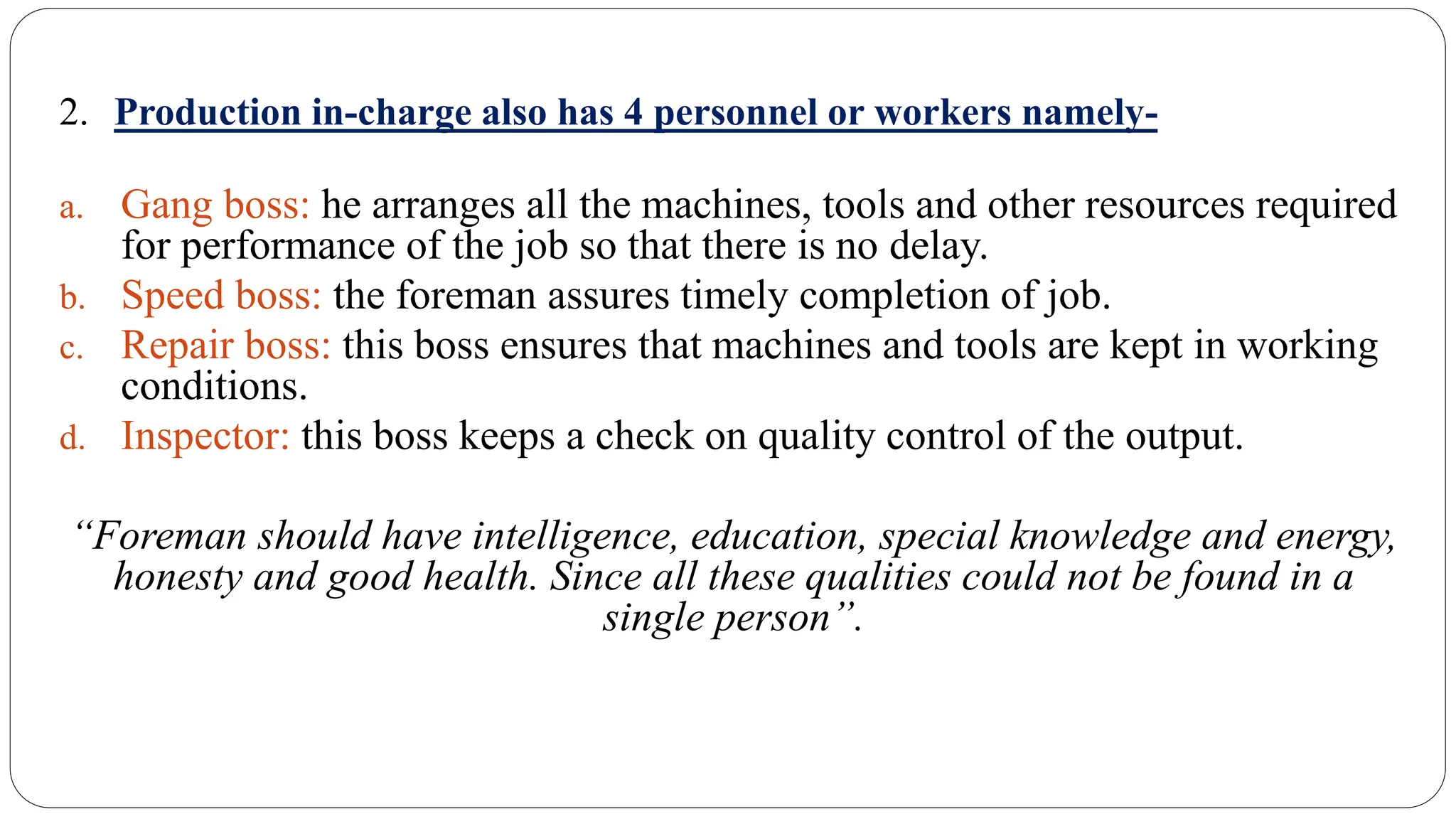The document discusses Henri Fayol's 14 principles of general management. It provides details on each principle such as their meaning, positive and negative effects. Some of the key principles discussed include division of work, authority and responsibility, unity of command, centralization and decentralization, order, equity, and stability of personnel. The principles are presented as general guidelines for effective management and organization of people and resources.























































